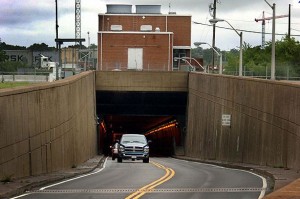Virginia’s reliance upon the Public-Private Partnership (P3) process to build large bridge, rail and highway projects has led to the centralization of decision making in the hands of the governor’s office with little effective oversight, contends James J. Regimbal Jr. with Fiscal Analytics, Ltd., in a report sponsored by the Southern Environmental Law Center (SELC).
That centralization makes it all the more imperative that decision-making under the Public-Private Transportation Act be more transparent and accountable, concludes Regimbal in “An Examination of the Virginia Public-Private Transportation Act of 1995.”
As traditional funding sources for transportation construction decline and formula allocations to systems and regions dry up, transportation decision-making is shifting away from a more diffuse system of local, regional Metropolitan Planning Organizations (MPOs), and Commonwealth Transportation Board (CTB) decision-making, to the PPTA proposer and Governor’s administrative agencies in charge of soliciting, screening and procuring PPTA projects. …
The increased centralization of transportation decision-making through the PPTA makes is more important than ever for the public and their representatives in the General Assembly to be kept adequately informed throughout the PPTA decision process.
The former Virginia Finance Committee staffer advances a number of recommendations, including (1) promoting competition by requiring more bidders, (2) making the state’s “Value for Money” analysis available to the public, (3) strengthening the independence of the Commonwealth Transportation Board, and (4) requiring a public hearing after all major business points have been disclosed and before a P3 agreement has been signed.
In some cases, Regimbal suggests, the state should limit private-sector involvement to design-build contracts, which ensure that projects get built on time and under budget, rather than giving private concessionaires an ownership stake in a project. He also advocates treating some projects as regulated utilities as a way to offset risks to private-sector partners without messy non-compete clauses, built-in toll escalators and other undesirable features.
Unlike in some states, the General Assembly has no role in selecting P3 projects. The CTB has no statutory role and is referred to only as an “oversight board” in PPTA implementation guidelines.
Furthermore, says Regimbal, there are no established criteria or a transparent process for determining the level of state subsidy to P3 projects. Thus, the Downtown/Midtown Tunnel project, the top transportation priority of the Hampton Roads region, received $300 million in state subsidies for the purpose of holding down toll charges, while the Route 460 Connector, which has a much lower regional priority, will receive more than $1 billion in state and Virginia Port Authority subsidies.
The key decision point in the P3 project-development process is the Value for Money analysis conducted by the Office of Transportation Public-Private Partnerships. This cost-benefit-risk analysis has not been made available to the public in time to solicit meaningful feedback from the citizenry or affected interests.
Bacon’s bottom line: Regimbal does an excellent job of laying out the main issues associated with the increasing use of P3s. He shows how some projects, such as the Interstate 495 Express Lanes project, accomplish important public objectives at a reasonable public cost and risk profile, while others leave many questions unanswered.
Regimbal wisely refrains from criticizing the McDonnell administration or particular state agencies, focusing instead upon the structural flaws of Public Private Transportation Act as currently written. Legislators enacted the law in 1995 and have made major updates since then, but it is only in recent years, since the state has negotiated a significant number of P3 projects, that the problems Regimbal highlights have become glaringly evident. The General Assembly needs to revisit the Act again. Hopefully, we’ll see legislation in January reflecting some of his proposals.
— JAB




